This Talbot-Lago sold for £312,500 at RM Auctions’ Automobiles of London auction held October 29th at the Battersea Evolution in Battersea Park, London, U.K. Its pre-sale estimate was £325,000 – £375,000.
1950 Talbot-Lago Type 26 Grand Sport Coupe
The Talbot-Lago Type 26 Grand Sport is one of a very special breed, for its 4.5-litre power unit was derived from the successful Grand Prix engine that carried the blue of France to victory both before and after the war.
“Whenever one of my cars wins a race, I feel that I am paying a moral debt to the country which has permitted me to realize my life’s dream,” said Tony Lago in 1946, the year in which he launched his new Lago-Record road car. At the time, the Record was the world’s most powerful production car, with a 4.5-litre engine derived from the Grand Prix power unit, but with twin high-set camshafts. In many respects the Record model was over-engineered and heavy, and it was to make up for this that the lighter and livelier Grand Sport – its engine uprated to 190 brake horsepower with triple Zenith-Stromberg carburetors – was conceived to make the most of the marque’s formidable reputation.

The sporting credentials of the 4.5-litre Talbot-Lago were amply proved when a brace of Type 26 SC racers took first and second place at Le Mans in 1950; the versatile Talbot-Lago also won Formula 1 Grand Prix races.
The Grand Sport was essentially a widened and lengthened Talbot-Lago Type 26 Grand Prix car, its 200 kilometer per hour potential making it a claimant for the title of the world’s fastest production chassis. Talbot-Lago offered the Grand Sport in two wheelbase lengths: 104 and 110 inches. These were potent and expensive cars, and despite the unfavorable climate in which luxury car manufacturers were forced to operate after the war, the great carrossiers like Saoutchik and Figoni & Falaschi were still around to create some wondrously opulent bodywork on Talbot-Lago chassis.
One of just 36 Grand Sport Talbot-Lagos produced between 1947 and 1953, the remarkable right hand drive example presented here was bodied by one of France’s most flamboyant coachbuilders, Jacques Saoutchik of Neuilly-sur-Seine, (a comune on the west side of Paris). Born Iakov Saoutchik in the Ukraine in 1880, the young Saoutchik had arrived in Paris in the early 1900s. A cabinetmaker by trade, he quickly graduated into the coachbuilding craft, exhibiting his first motor bodies in 1905.
Saoutchik, recalled the noted designer and historian Philippe Charbonneaux, “took every possible risk. Nicknamed ‘Viollet-le-Duc’, he never hesitated to embellish with chrome or even gilt. Obsessed with form… visual magic is what he was after.”
That ‘visual magic’ was expressed in the brightwork appliqué that adorned so many of Saoutchik’s bodies, highlighting the dominant lines of the coachwork.

Other coachbuilders appreciated the graceful flowing contours of Saoutchik’s bodywork: “He was a real craftsman, that fellow,” said Howard ‘Dutch’ Darrin of Hibbard & Darrin. “He was also one of the few coachbuilders in France then who wasn’t copying us in some way. I particularly remember his beautifully finished interiors. Yes, he was definitely a man with his own ideas.”
Those ‘own ideas’ included many daring novelties – transformable bodies, cars with removable windshields, parallel opening doors on pantograph linkages – but it was that love of ornamentation for which he is particularly remembered. Ambitious, scheming, passionate about modern art, Jacques Saoutchik’s prime obsession was with shape, and that plastic audacity was never better expressed than in his bodies on Talbot-Lago chassis. Indeed, a Saoutchik-bodied Talbot-Lago was chosen as the official car of the French President, Vincent Auriol.
Following the Second World War, the times were definitely against both car maker and carrossier: Saoutchik tried to keep the momentum going by bodying foreign chassis – Cadillac, Pegaso, and even Rolls-Royce, but the company was on the ropes. Saoutchik’s son Pierre took over responsibility both for the company and for its designs in 1952, but he could not battle against fate, and, in the memorable phrase of historian Don Vorderman, “the real world overcame these almost magical creators of fairytale bagatelles for ever-so-faintly-preposterous, irresistibly enviable fairytale revelers.”
The 1950 Talbot-Lago Type 26 Grand Sport pictured here is an excellent example of how Saoutchik combined the fashionable pontoon style with his postwar trademark tapered teardrop style in a body in which virtually half of its length is the hood; indeed, the steering wheel hub is at the midpoint of the body length. The Talbot-Lago Type 26 was built on the short 104-inch wheelbase Grand Sport chassis.
The Type 26 was delivered to its first owner, a Monsieur Cayala, in France on October 17th, 1950. The car later passed to an enthusiast in Germany and following this to Maurice Harloux of Belgium. American collector Paul Myers purchased the Grand Sport from M. Harloux, and it was following this it was acquired by the widely known and distinguished Rosso Bianco Collection of Germany.
Recently, during its previous ownership, the Talbot-Lago was treated to a complete body-off restoration by European specialists. The exterior was painted a lovely Sea Green and the interior was reupholstered in plush leather and proper wool carpets in a complementing shade of green. A correct set of new chrome wire wheels were fitted to the Type 26 and mechanically, the Grand Sport was extensively serviced.
Characterized by many as the “French 250 GT,” the Talbot-Lago Grand Sport enjoys many important distinctions, not least its rarity. The four-litre Talbot-Lago engine and Wilson pre-selector gearbox is a relaxed yet potent combination that epitomizes the distinction between a French grand touring car and the Italian gran turismo, an automobile of ample power backed up by low end torque. Smooth and powerful at any speed, this Talbot-Lago Grand Sport will reward its new owner with distinctive style and complementary performance whether on tours, racetracks or the boulevard, at home on the Riviera, South Beach, the Hamptons or Spa-Francorchamps alike.
[Source: RM Auctions]






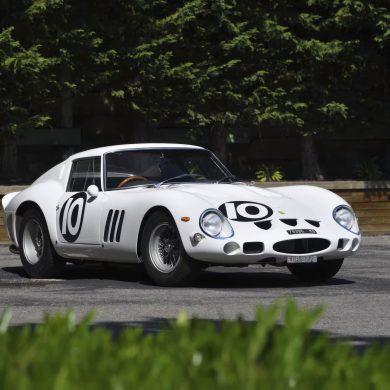
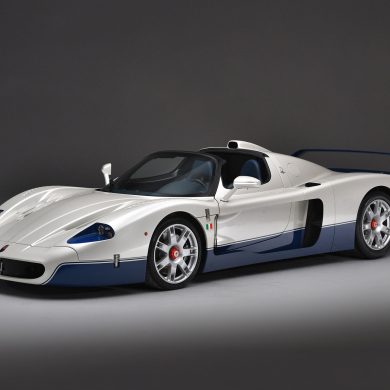
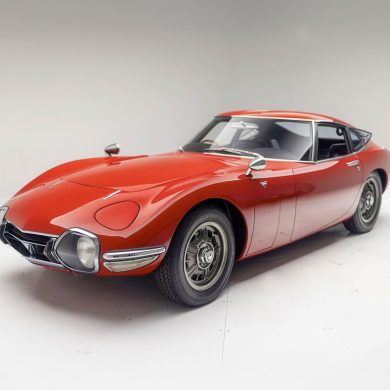
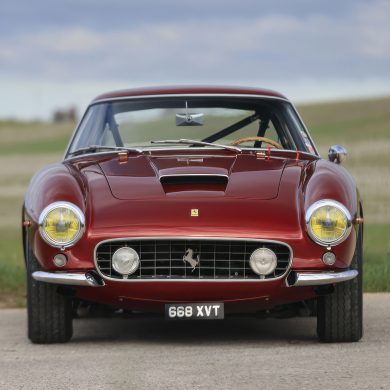

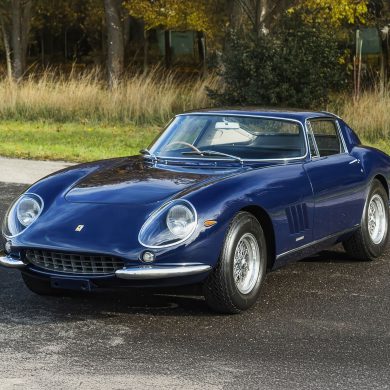


That is one beautiful car, sleek and styled, with a distinct touch of “Veritas”.
I love it … thanks for posting on it.
Cheers!